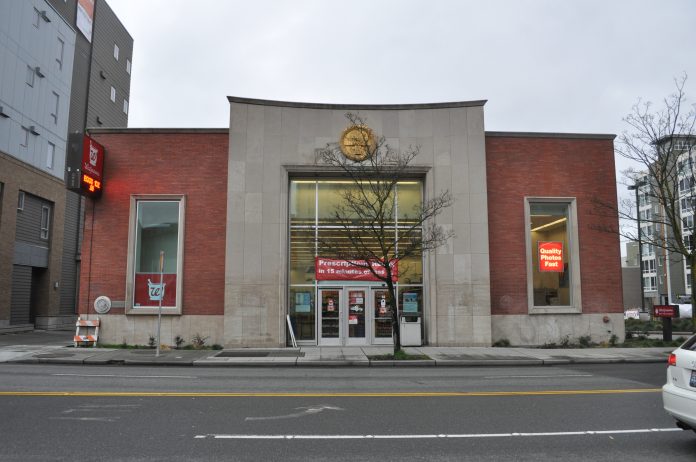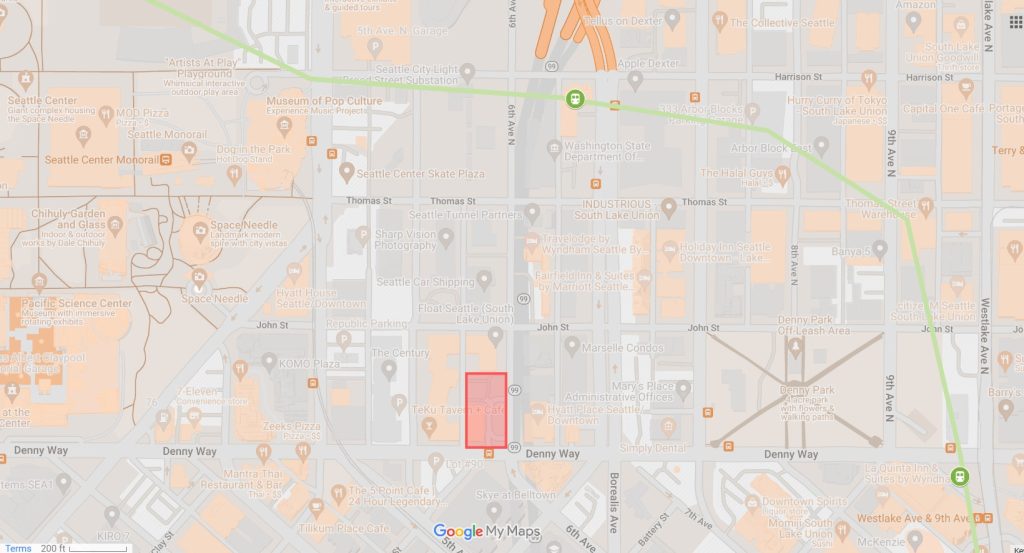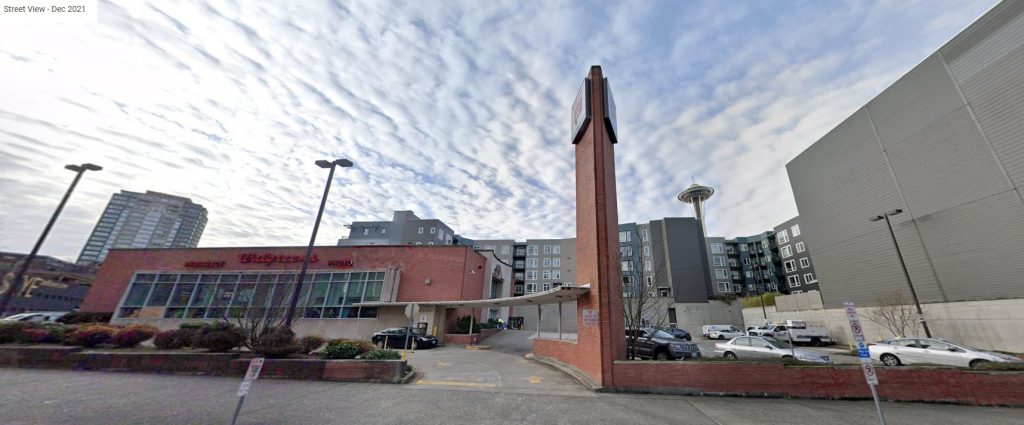
The Seattle City Council took a little break for the holidays, but they are back and attending to the urgent business of… preserving a one-story drive-thru Walgreens in South Lake Union, apparently. Alas, this is a waste of everyone’s time — they should have probably just stayed on vacation at this rate.
City Council will take up the issue at a 2pm full council meeting today after accepting public comments. Councilmembers should reject amendments seeking to save the drive-thru and accompanying pharmacy because the building and the auto-centric land use it represents really don’t need to be saved. Instead, a 16-story residential tower with a mix of apartments ranging from multi-bedrooms to studios could go in its place and provide about $3.5 million in Mandatory Housing Affordability (MHA) contributions, which would be a huge win for housing abundance and affordability. The Urbanist encourages folks to submit comments by calling in or emailing.
South Lake Union should be where we build a dense, forward-looking city rather than cling to suburban-style drive-thrus like a bunch of lost weirdos addled by nostalgia. A city that’s scared to replace a drive-thru is a city that isn’t going to solve its housing crisis. And the Seattle City Council has much bigger problems to tackle than micro-managing and jeopardizing what should be a slam dunk development to put a tower at this sprawl-tastic Walgreens site that will be next door to a future light rail station at SR 99 and Harrison.

Seriously, what kind of joke-of-a-city invests several billion dollars in a underground light rail line and then preserves a drive-thru a few blocks from one of the stations? Is this how we do land use in our city? Is this how we plan our future?
How we got here
Erica C. Barnett of Publicola has written extensively about this Walgreens proposal. Though a generic carbon-copy Seattle-First National Bank built in 1950 (and since renovated) with numerous identical copies existing throughout the region, the building was landmarked back in 2010, she notes, which set the stage for the drama unfolding now. Based on an earlier committee vote, it had looked like Council was going to correct that misguided decision and remove development controls on the building, but then a preservation effort emerged at the last minute.
In a reversal of a committee vote last week, the Seattle city council appears poised to preserve a drive-through Walgreen’s on the edge of South Lake Union, after Councilmember Tammy Morales (who previously opposed preservation) accepted as a “friendly amendment” a proposal by Councilmember Lisa Herbold to “protect” the one-story building and driveway, but not its parking lot. The legislation on the council’s agenda Tuesday afternoon would require Walgreen’s, or any subsequent owner, to obtain approval from the city’s landmarks board before making any visible changes to the building.
Erica C. Barnett – Publicola
Oddly, Herbold alleged that preserving the building and drive-thru but allowing the 12,000-square-foot parking lot to be redeveloped would result in more units, 310 to be exact, than redeveloping the entire site. She produced a staff memo tepidly supporting her assertion, but this housing math doesn’t hold up to scrutiny, as Barnett pointed out.

The developer would need to qualify for every incentive in the books plus switch to micro-apartments to get the math to work, and even then it’s a stretch, since developer interest appears very likely to vaporize trying to thread such a tiny needle, especially with negotiations with the landmarks board still hanging over their head.
Landmark controls decrease MHA contributions and jeopardize redevelopment
The Urbanist reached out to Jessica Clawson, a land use attorney with McCullough Hill Leary, who said the Herbold amendment would create a “footprint that cannot accommodate a tower.” She pointed to the need for support beams, elevators, and circulation eating up most of the floorplate and making it inefficient to build.
Clawson said building a midrise building that takes advantage of a 1.0 floor area ratio (FAR) bonus for historic preservation may allow the site to fit 245 homes by electing to build micro-apartments averaging 300 square feet each. However, such microhousing certainly wouldn’t be family-sized, let alone be likely to host many couples. And the MHA housing contributions would be about half as much given the lesser square footage. So, why trade away the ability to build a 16-story building with a range of unit sizes, a larger MHA contribution, and a much greater likelihood of actually getting built?
Doug Trumm is publisher of The Urbanist. An Urbanist writer since 2015, he dreams of pedestrian streets, bus lanes, and a mass-timber building spree to end our housing crisis. He graduated from the Evans School of Public Policy and Governance at the University of Washington in 2019. He lives in Seattle's Fremont neighborhood and loves to explore the city by foot and by bike.

